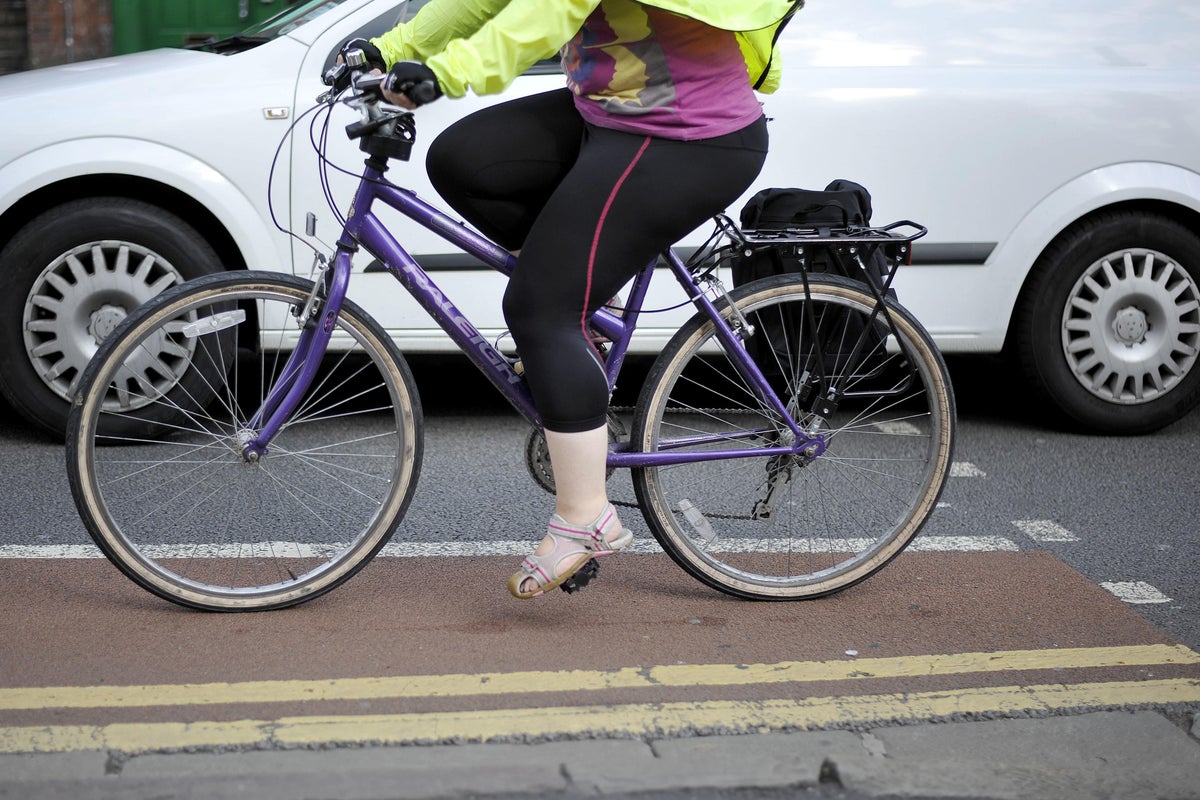
The government targets to increase levels of cycling and walking in England are set to be missed, according to a new report.
Delivery of active travel schemes has been “patchy” and the Department for Transport (DfT) “does not yet know” if local authority projects “have been of good enough quality”, public spending watchdog the National Audit Office (NAO) said.
The government’s objectives for active travel include doubling the number of journeys made by cycling from 0.8 billion in 2013 to 1.6 billion in 2025.
It also wants to increase the percentage of short journeys in towns and cities that are walked or cycled from 41 per cent in 2018/19 to 46 per cent in 2025, and has targets for boosting walking activity.
DfT knows little about what has been achieved— Gareth Davies, the head of NAO
The NAO said: “It is unlikely that DfT’s objectives for increased active travel by 2025 will be achieved.”
In response, the DfT said it is “committed to ensuring that more people choose to walk, wheel and cycle”.
The NAO found that the creation of the government agency Active Travel England at the beginning of 2022 “has the potential to be a catalyst for increasing walking, wheeling and cycling”.
The DfT estimates the government will provide around £6.6bn for active travel between 2016 and 2025, the NAO said.
A reduction in active travel budgets was announced in March.
The NAO recommended that the DfT reviews its objectives for 2025 and beyond, and sets Active Travel England stretching but achievable targets.
Gareth Davies, the head of NAO, said: “Active travel schemes have the potential to deliver significant health and environmental benefits.
“However, DfT knows little about what has been achieved through its past spending and is not on track to achieve most of its objectives.
“DfT has raised its ambitions for active travel and recognised areas where its performance must improve.
This report reveals that active travel objectives are in tatters, and only serves to highlight that long-term and ring-fenced investment can transform lives if done well— Xavier Brice, Sustrans
“Establishing Active Travel England is a good step. Active Travel England and DfT must now maintain this early positive momentum, by learning what works and applying it and building partnerships across central and local government.”
A DfT spokesman said: “We are committed to ensuring that more people choose to walk, wheel and cycle across England and that’s why we are investing £3bn up to 2025, more than any previous government, to help people choose active travel.
“Active Travel England was established last year to drive up standards of active travel schemes, working closely with local authorities to make sure they deliver high-quality schemes which work for, and encourage, local residents to travel actively.”
Louise Haigh, Labour’s shadow transport secretary, said: “This government’s failure to get on track to meet its own targets for walking and cycling is just the latest in a literal cycle of broken promises.
“Walking and cycling has huge benefits for public health, the environment and the economy, but this government has shown again and again that it cannot deliver on its word.”
Linda Taylor, transport spokesperson for the local government association, said councils “have been at the forefront in creating new active travel schemes” but can only continue to do this with “long-term certainty for vital local projects”.
Xavier Brice, chief executive at walking and cycling charity Sustrans, said: “This report reveals that active travel objectives are in tatters, and only serves to highlight that long-term and ring-fenced investment can transform lives if done well.”
Sarah Mitchell, boss of charity Cycling UK, said the government “hasn’t committed adequate funds to achieve its own targets”.
She went on: “The government now needs to publish its own evidence on the level of funding needed, and then increase existing funding to enable Active Travel England to deliver the government’s goals.”







